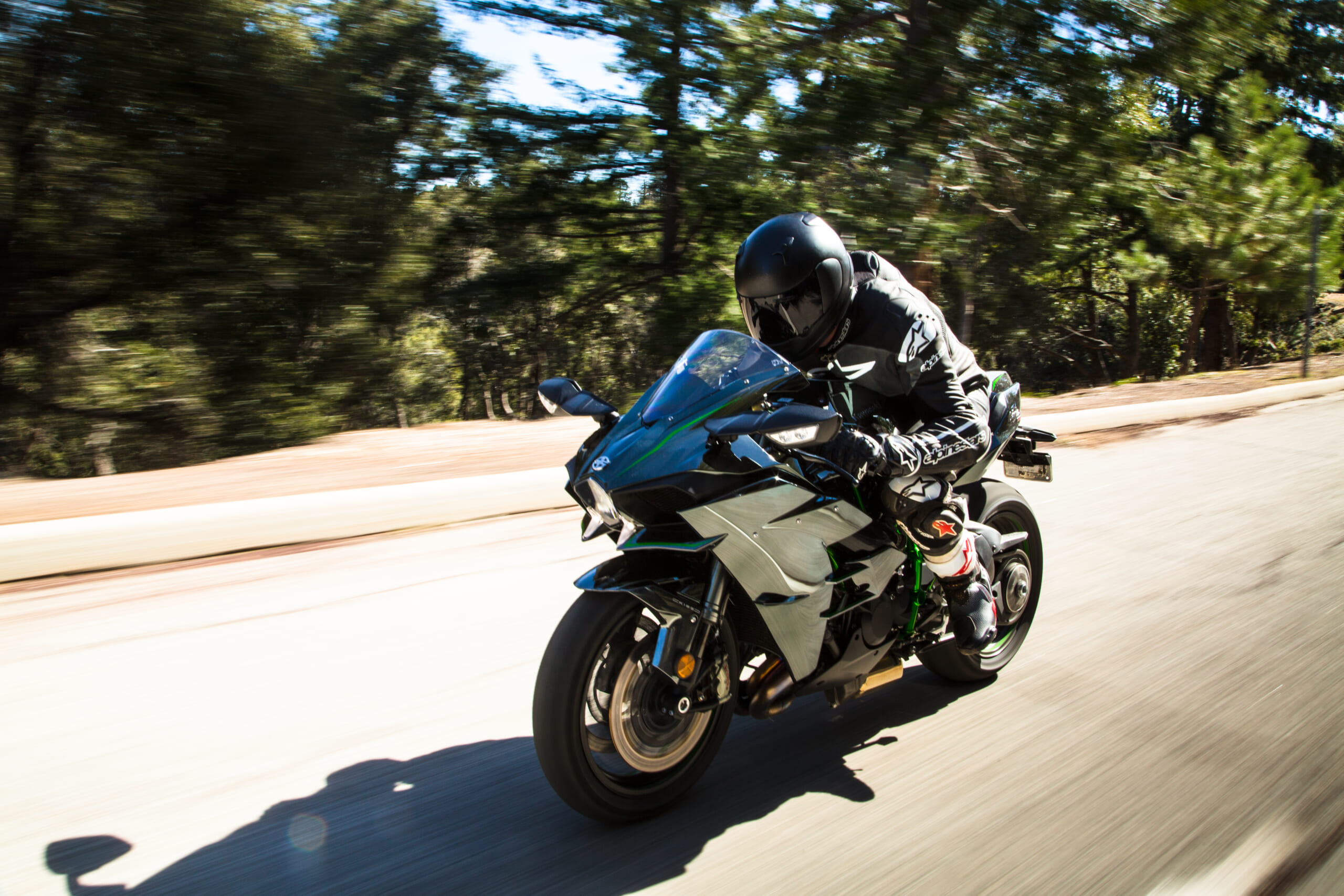We Rode the Supercharged Kawasaki H2
A bike that straddles the fine line between fear and intimidation.

Coming out of an off-camber corner on the mountain roads high above Los Angeles, the back tire of the $26,000 Kawasaki H2 breaks loose and starts sliding. The superbike shimmies across the pavement, skirting the ragged edge of the road as rocks and weeds whack against my Alpinestars leathers. I regain control of the rear end, slowly let out a sigh of relief, and ease from the side of the bike back onto its seat. The supercharger whines as I slowly twist the throttle, but I hold steady halfway through the rev range, completely frozen, unsure of what to do. Should I be afraid of this 200-horsepower 2015 Kawasaki H2, or am I simply intimidated by it?
Fear and intimidation are far more different than they feel. The former stems from the expectation and realization of danger whereas the latter comes from the threat of danger, and yet both feed your cowardice and force you to stop and step back. Separate the two, and you’ll see intimidation for the mongering phantom it is.
The Kawasaki H2’s long, low-slung silhouette, bat-like face, bright-green trellis frame, and aggressive fairings are as intimidating as they are alluring, attracting the attention of every biker I’ve met up here in the crags. They’re all surprised by how the one-liter inline-four meekly hums at idle, but they’re shocked when I hit the throttle and the engine emits a guttural crow and the supercharger shrieks like Ronnie James Dio. I’ve invited some them to sit on the bike, but they looked at me like I asked if they wanted to swim in chum-filled water or kick Conor McGregor in the nuts.

Simply throwing a leg over the H2 doesn’t mean you’ve overcome intimidation though. The bike feels overpoweringly precise, from its tightly wound throttle and cramp-inducing clutch lever to its meaty brakes and sharp quick-shift system. Friends who have previously ridden the H2—some of the world’s most accomplished motorcyclists who are far more talented riders than myself—warned me to tread lightly; they said the bike would be happy to lift its front tire and buck me off the back if I weren’t gentle the first few times out. A weeklong warm-up, pussyfooting around downtown led me here to the switchbacks writhing through the San Gabriel Mountains.
Holding steady after my momentary folly, hesitant to let the H2 loose, I finally tuck my body against the chiseled gas tank and open the bike’s throttle. The front tire immediately starts to lift, so I short-shift, forcing the rubber back to road. The H2 barrels forward, showing no signs of fatigue, as the needle on the analog tachometer rises and the digital speedometer hits triple digits. By the time I get to the braking point for an upcoming set of tight esses, my speed is unfathomably felonious. I ease onto the front brakes, quickly realizing that I’m going to take a dive off a cliff if I “ease” on the brakes of a 525-lb superbike, so I squeeze all of the play out of the brake lever, forcing the four-piston Brembo calipers bite down hard on the drilled brake discs.
My speed is only mildly felonious when I slide back off the H2’s seat and start to transition through the set of short, tight corners. While it would be a stretch to call the H2 nimble and easy to toss around, the hefty bike is very communicative about what it is comfortable doing and has high-yet-approachable limits of grip. The bike is so planted that I feel confident going flat out through corners. There’s not another moment during my run through the hills above L.A. that makes me clench or think, “Man, I should draft a will.”
Even if its spec sheet and appearance say otherwise, my being intimidated by the bike is understandable but unnecessary. There’s little reason to fear this bike, but it does deserve every ounce of my respect, and the line between fear and respect is even thinner than the line between fear and intimidation.
